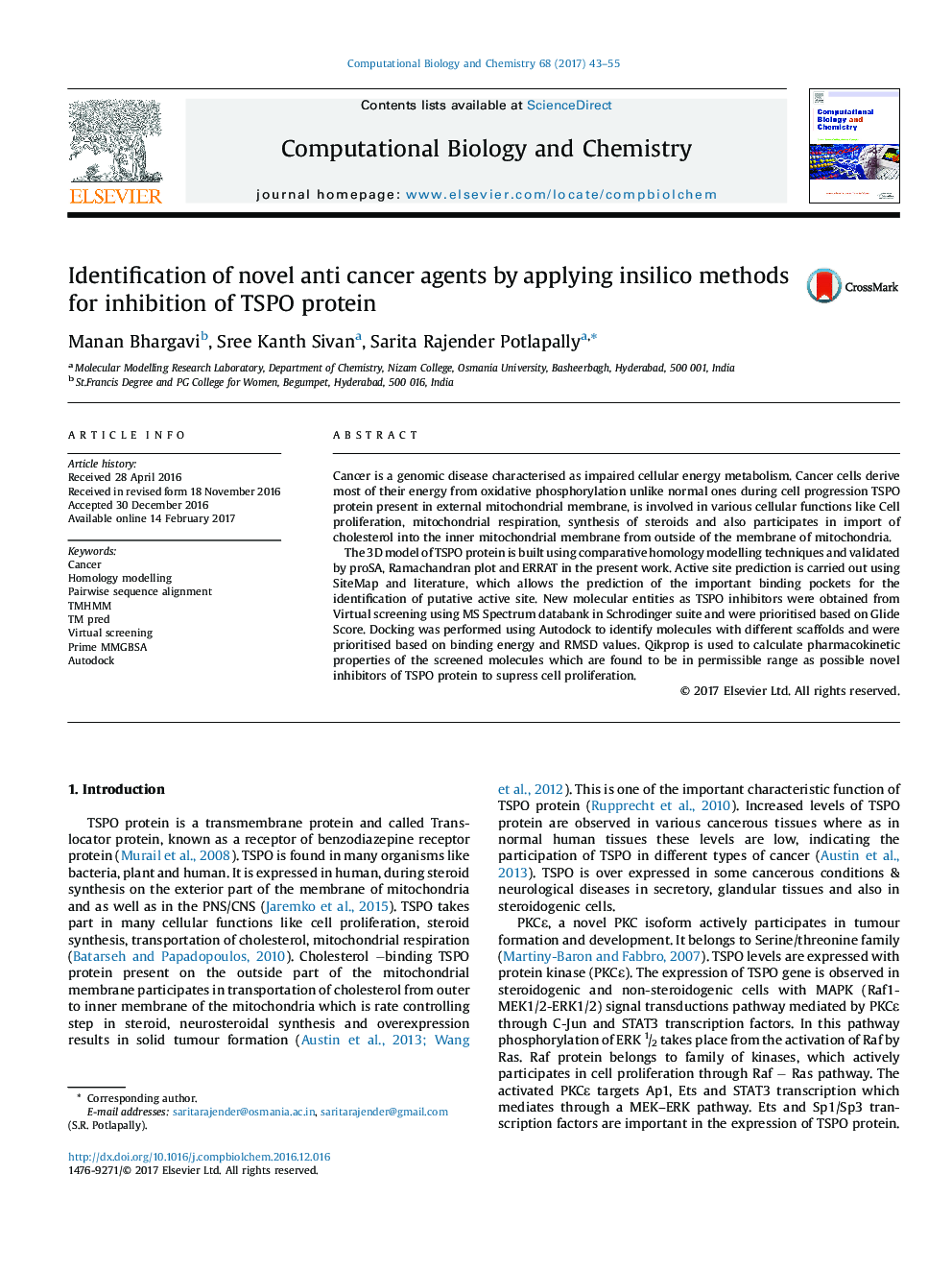| Article ID | Journal | Published Year | Pages | File Type |
|---|---|---|---|---|
| 6451311 | Computational Biology and Chemistry | 2017 | 13 Pages |
â¢In the present work, the 3D model of TSPO protein is generated using comparative homology modelling techniques.â¢Prediction of the important pockets for identification of putative active site.â¢Virtual screening was carried out using MS Spectrum data bank in Schrodinger suite to identify new molecular entities.â¢New molecular entities were prioritised based on Glide Score and ADME properties as novel inhibitors of TSPO protein.
Cancer is a genomic disease characterised as impaired cellular energy metabolism. Cancer cells derive most of their energy from oxidative phosphorylation unlike normal ones during cell progression TSPO protein present in external mitochondrial membrane, is involved in various cellular functions like Cell proliferation, mitochondrial respiration, synthesis of steroids and also participates in import of cholesterol into the inner mitochondrial membrane from outside of the membrane of mitochondria.The 3D model of TSPO protein is built using comparative homology modelling techniques and validated by proSA, Ramachandran plot and ERRAT in the present work. Active site prediction is carried out using SiteMap and literature, which allows the prediction of the important binding pockets for the identification of putative active site. New molecular entities as TSPO inhibitors were obtained from Virtual screening using MS Spectrum databank in Schrodinger suite and were prioritised based on Glide Score. Docking was performed using Autodock to identify molecules with different scaffolds and were prioritised based on binding energy and RMSD values. Qikprop is used to calculate pharmacokinetic properties of the screened molecules which are found to be in permissible range as possible novel inhibitors of TSPO protein to supress cell proliferation.
Graphical abstractDownload high-res image (106KB)Download full-size image
